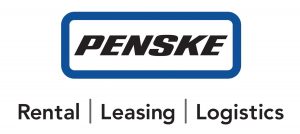According to the American Trucking Associations, the trucking industry has been depleted of truckers for quite some time. Amidst strikes and company closures last year, many have left the industry and fewer are interested in joining the industry now. The ATA reports an estimation of a shortage of around 78,000 drivers. One of the key markets of drivers are immigrants, but many fleets struggle amidst communication issues caused by language barriers. Given the lack of drivers, many trucking companies and fleets have decided to turn to alternative methods to allow for better communication with drivers who immigrated to the United States, opening up the market tenfold. What is the way in which they plan to do this, you may ask? By introducing new tech.
Technological programs are beginning to be introduced that would allow non-English speaking individuals to work in the trucking industry more easily.
When it comes to statistics of immigrants working in the trucking industry, the numbers are already decently high. According to the Bureau of Labor statistics, immigrants make up 17% of the overall workforce in the U.S. In the trucking industry specifically, they make up about 18.6% of employed drivers. The trucking industry has always been an attractive one to immigrants due to fewer layoffs and an often higher pay scale than other blue-collar jobs.
The technology that would be implemented would allow truck drivers to have smoother times when dealing with things like pick up and drop off locations, load amounts, etc. Essentially, anything that would need to be communicated to the driver would be translated into a language of their choosing. This will make the job of the driver much easier, as it removes an extra layer of complication to their job that previously may have put them at a disadvantage compared to English speaking drivers. Furthermore, this will allow for better accuracy when it comes to pick up and drop off, leading to better track records for the fleet.
Overall, this tech acts as a win-win scenario for the fleets and drivers.
One fleet executive, Robert Loya, the Chief Operating Officer of TGS, said that the technology will help simply reduce any misunderstandings. Even when drivers speak English, sometimes things get lost in translation. Being able to have key information available to drivers in their native language allows them to fully communicate and understand the ins and outs of their load.




